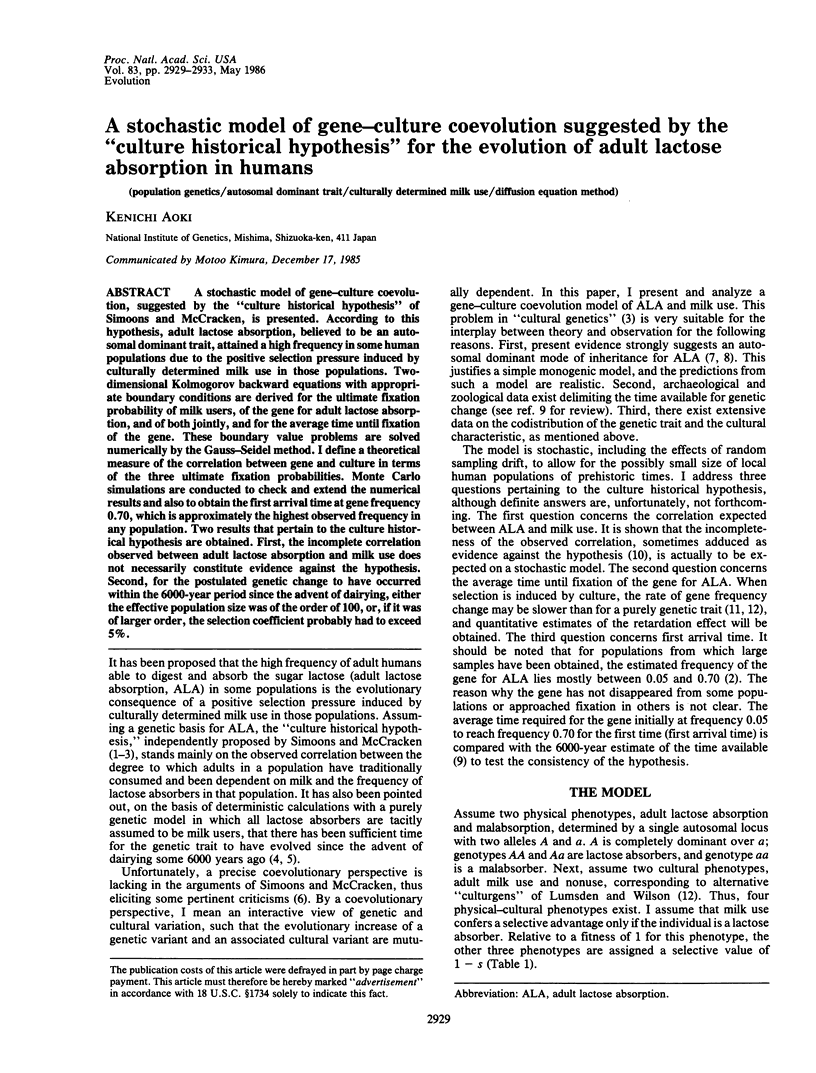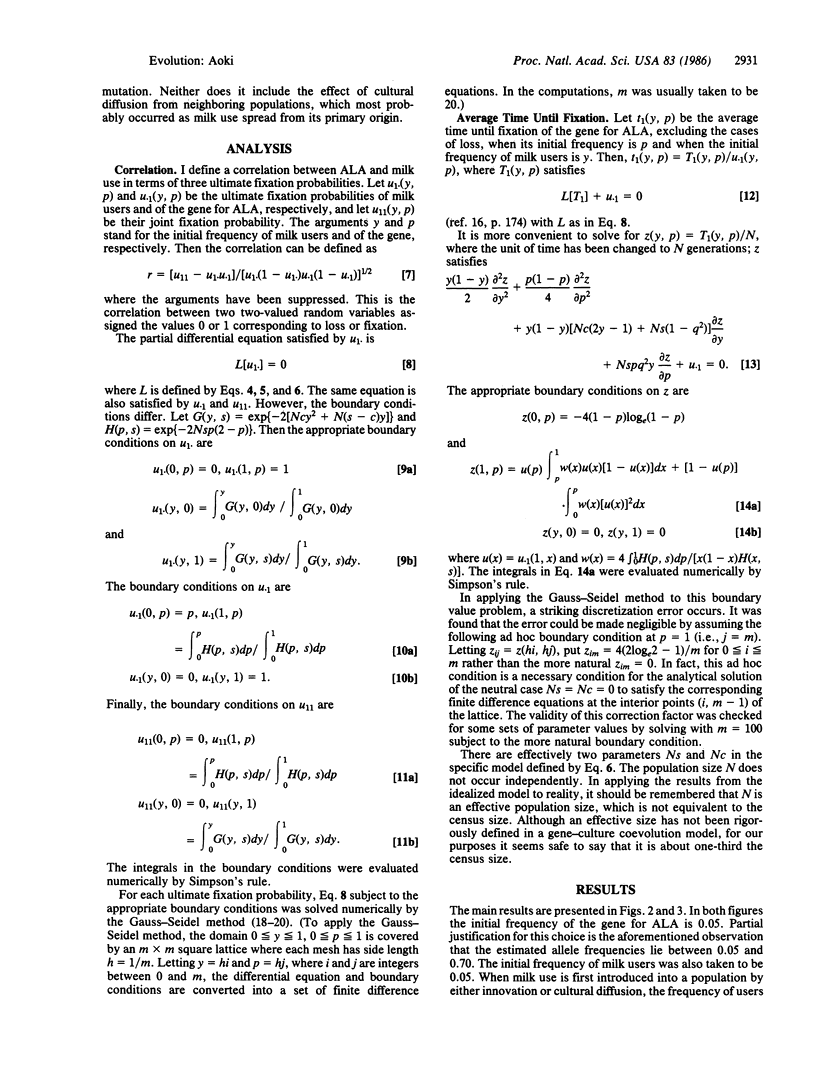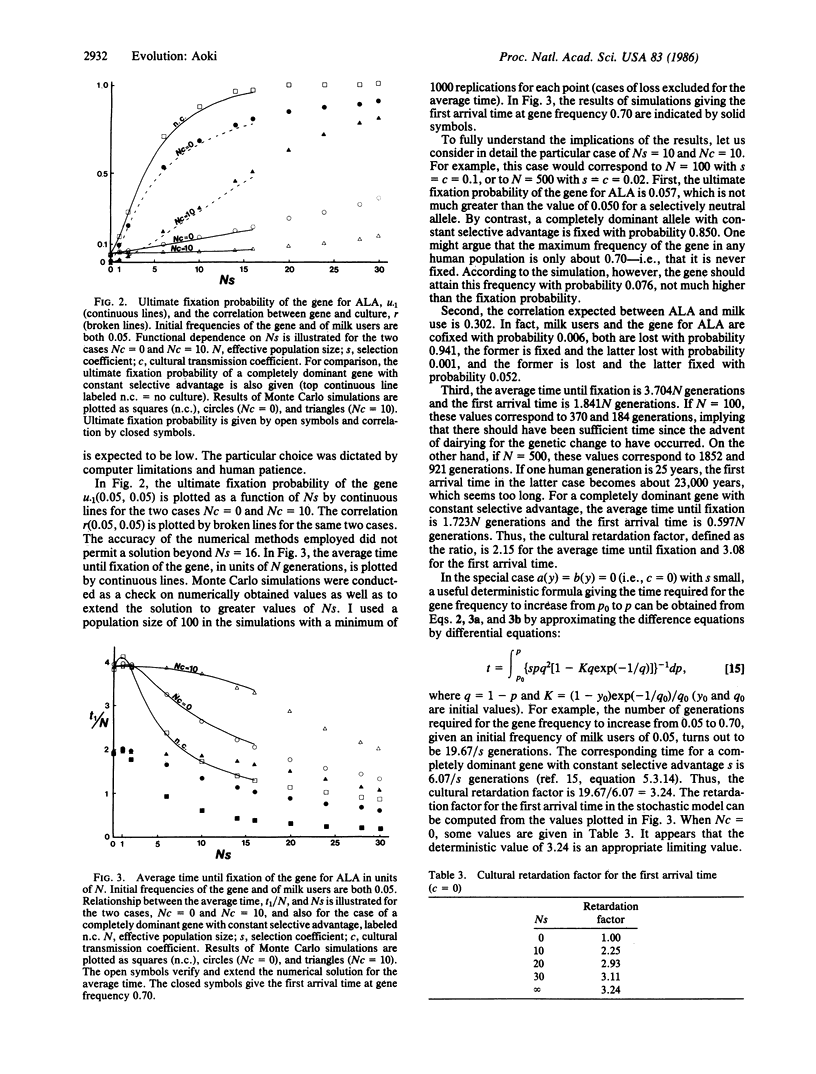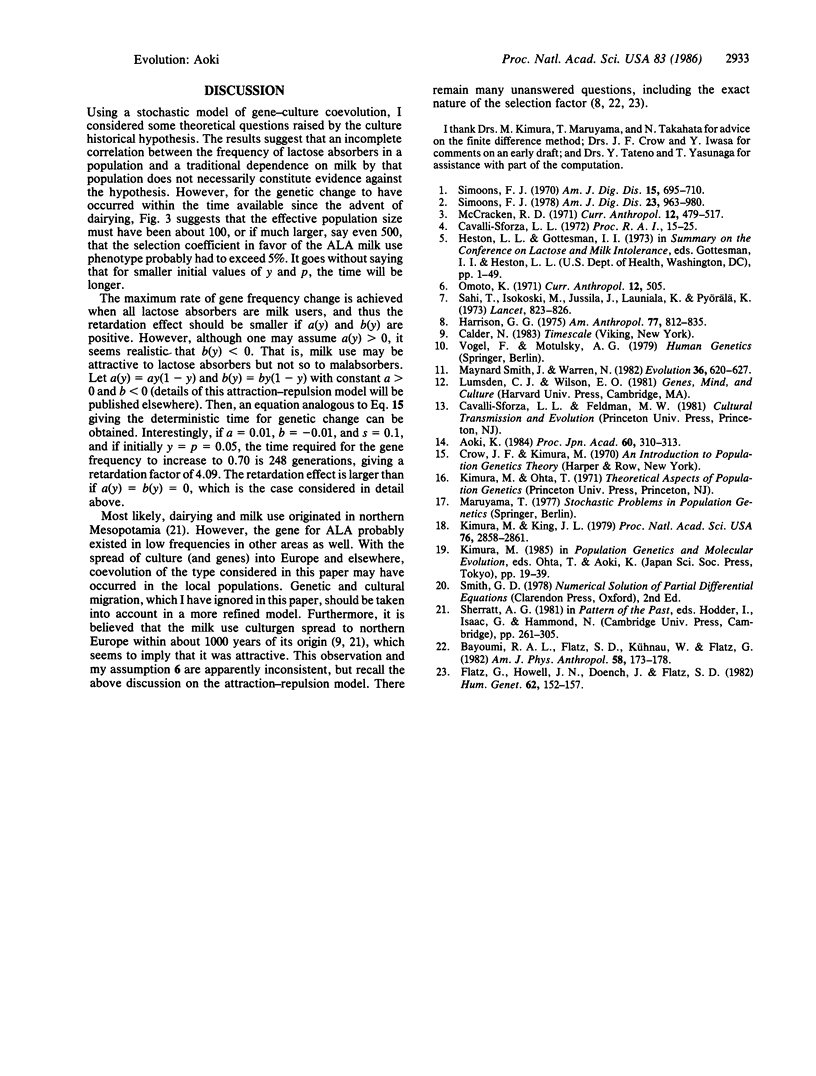Abstract
A stochastic model of gene-culture coevolution, suggested by the "culture historical hypothesis" of Simoons and McCracken, is presented. According to this hypothesis, adult lactose absorption, believed to be an autosomal dominant trait, attained a high frequency in some human populations due to the positive selection pressure induced by culturally determined milk use in those populations. Two-dimensional Kolmogorov backward equations with appropriate boundary conditions are derived for the ultimate fixation probability of milk users, of the gene for adult lactose absorption, and of both jointly, and for the average time until fixation of the gene. These boundary value problems are solved numerically by the Gauss-Seidel method. I define a theoretical measure of the correlation between gene and culture in terms of the three ultimate fixation probabilities. Monte Carlo simulations are conducted to check and extend the numerical results and also to obtain the first arrival time at gene frequency 0.70, which is approximately the highest observed frequency in any population. Two results that pertain to the culture historical hypothesis are obtained. First, the incomplete correlation observed between adult lactose absorption and milk use does not necessarily constitute evidence against the hypothesis. Second, for the postulated genetic change to have occurred within the 6000-year period since the advent of dairying, either the effective population size was of the order of 100, or, if it was of larger order, the selection coefficient probably had to exceed 5%.
Full text
PDF




Selected References
These references are in PubMed. This may not be the complete list of references from this article.
- Bayoumi R. A., Flatz S. D., Kühnau W., Flatz G. Beja and Nilotes: nomadic pastoralist groups in the Sudan with opposite distributions of the adult lactase phenotypes. Am J Phys Anthropol. 1982 Jun;58(2):173–178. doi: 10.1002/ajpa.1330580208. [DOI] [PubMed] [Google Scholar]
- Flatz G., Howell J. N., Doench J., Flatz S. D. Distribution of physiological adult lactase phenotypes, lactose absorber and malabsorber, in Germany. Hum Genet. 1982;62(2):152–157. doi: 10.1007/BF00282305. [DOI] [PubMed] [Google Scholar]
- Kimura M., King J. L. Fixation of a deleterious allele at one of two "duplicate" loci by mutation pressure and random drift. Proc Natl Acad Sci U S A. 1979 Jun;76(6):2858–2861. doi: 10.1073/pnas.76.6.2858. [DOI] [PMC free article] [PubMed] [Google Scholar]
- Sahi T., Isokoski M., Jussila J., Launiala K., Pyörälä K. Recessive inheritance of adult-type lactose malabsorption. Lancet. 1973 Oct 13;2(7833):823–826. doi: 10.1016/s0140-6736(73)90862-3. [DOI] [PubMed] [Google Scholar]
- Simoons F. J. Primary adult lactose intolerance and the milking habit: a problem in biologic and cultural interrelations. II. A culture historical hypothesis. Am J Dig Dis. 1970 Aug;15(8):695–710. doi: 10.1007/BF02235991. [DOI] [PubMed] [Google Scholar]
- Simoons F. J. The geographic hypothesis and lactose malabsorption. A weighing of the evidence. Am J Dig Dis. 1978 Nov;23(11):963–980. doi: 10.1007/BF01263095. [DOI] [PubMed] [Google Scholar]


